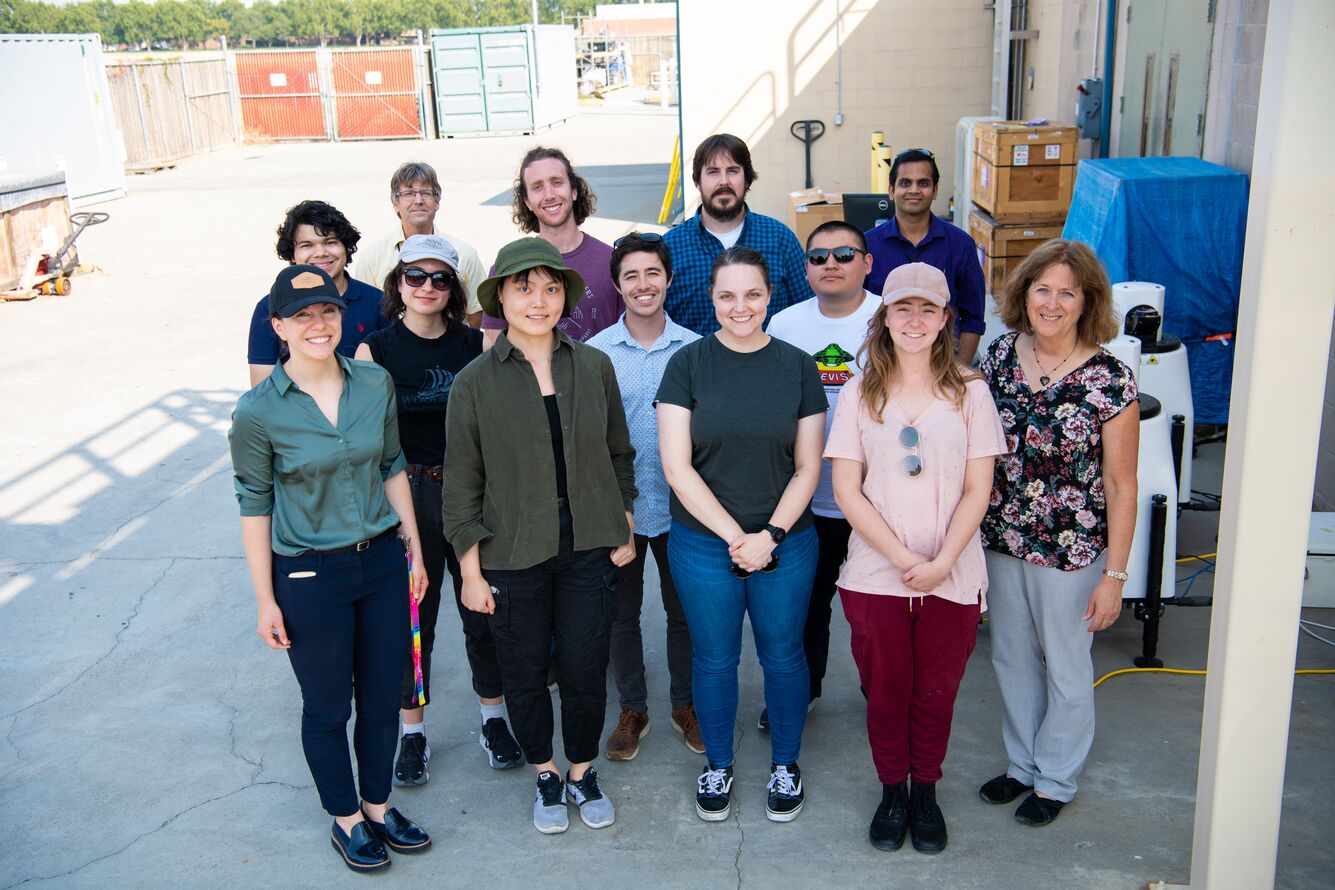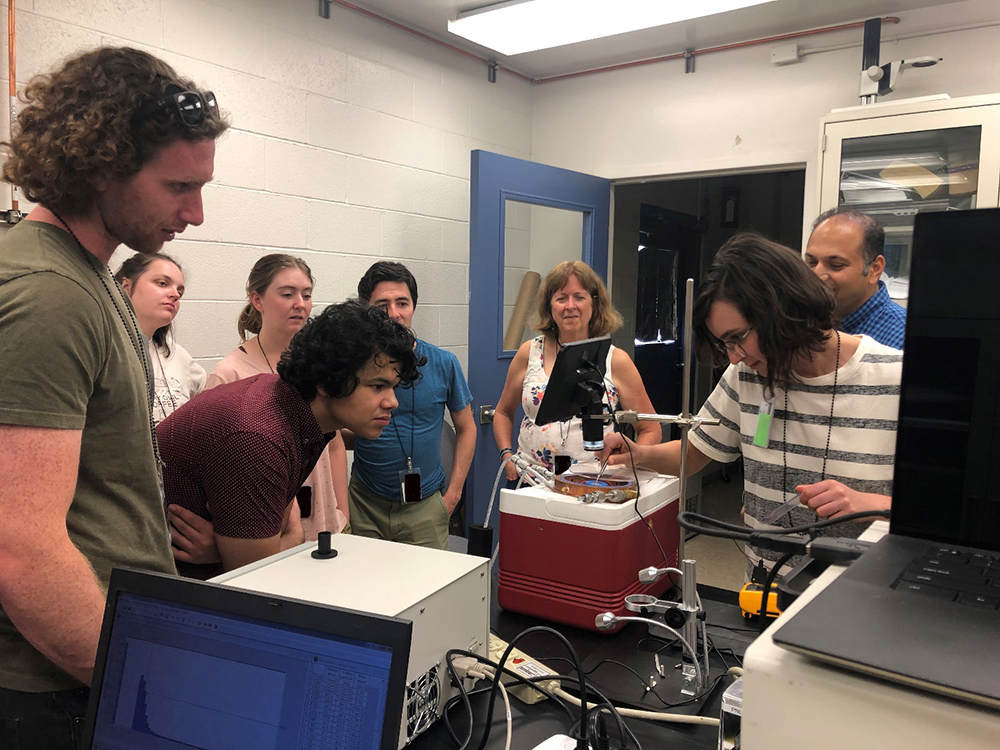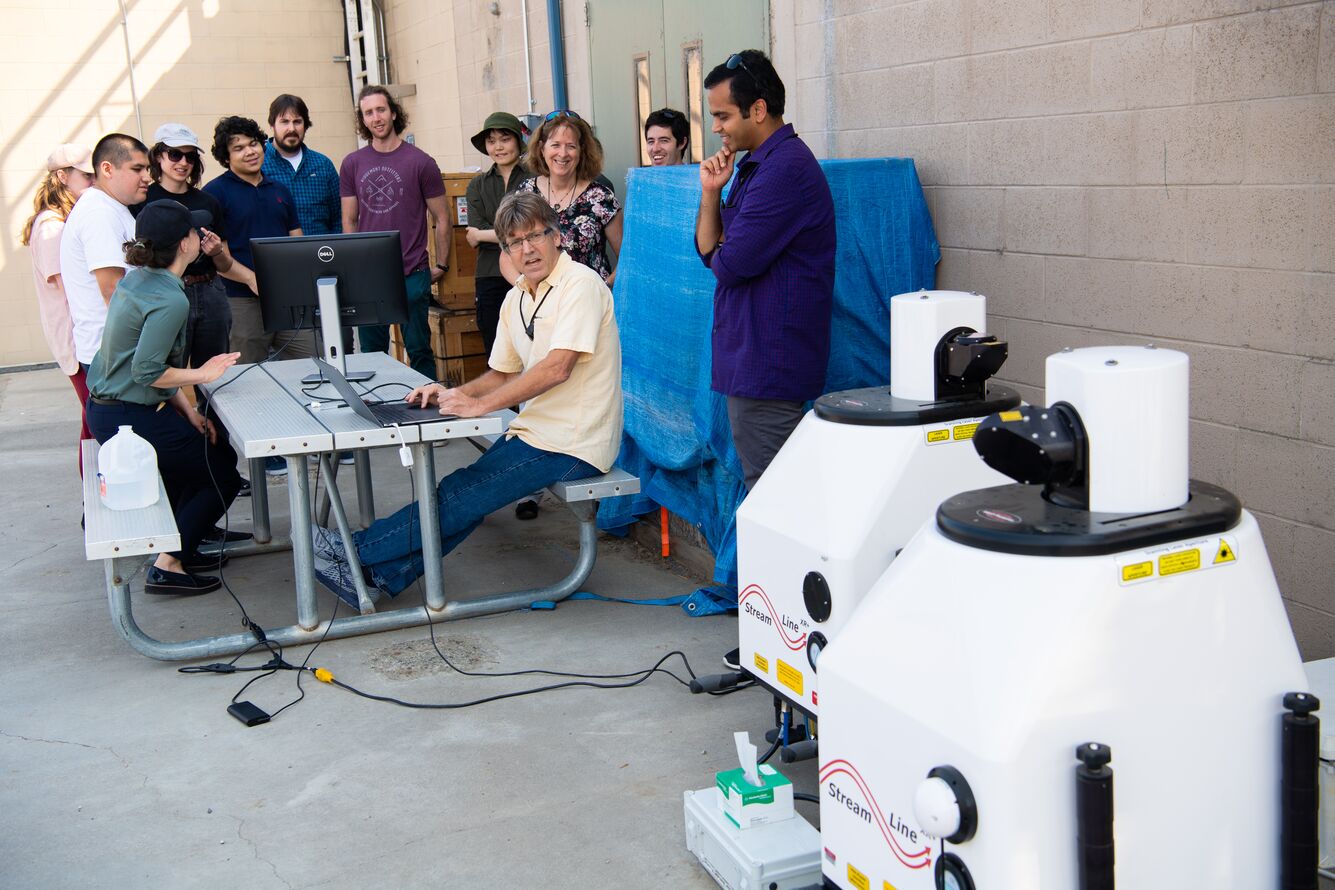University of Washington students learn about ARM in special course at Pacific Northwest National Laboratory

This summer, ShanghaiRanking’s 2022 Global Ranking of Academic Subjects named the University of Washington (UW) as the top school in the world for atmospheric science.
In September, nine graduate students from UW’s atmospheric sciences department made their way to Richland, Washington, to participate in a special two-week class offered by UW and Pacific Northwest National Laboratory (PNNL).
Students learned about atmospheric instrumentation from experts in the field, many of whom are staff with the Atmospheric Radiation Measurement (ARM) user facility. They participated in hands-on demonstrations with a wide variety of instruments and received in-depth lab tours.
The course also included discussions about ARM data and field campaign planning.
Each student was paired with a PNNL scientist or engineer as a mentor. That mentor will serve as an advisor for a final project to be completed by the graduate student.
PNNL earth scientist Lexie Goldberger, an ARM instrument mentor and a UW alum, co-organized the course with Lynn McMurdie, a research associate professor in UW’s atmospheric sciences department.
“This course taught at PNNL by PNNL scientists opened the eyes and minds of the students about complex research-quality instrumentation,” says McMurdie. “All the students gained a greater appreciation for what scientists and engineers do with instrumentation, how they calibrate an instrument, and how to interpret the data correctly to gain scientific insight into earth system science problems. It also exposed them to what is like to have a career in a government lab like PNNL, a career path many of them had not known about or considered before.”
Rave Reviews

Goldberger coordinated and hosted the students at the lab. She enlisted 16 PNNL scientists and engineers to lecture and demonstrate instrumentation.
“It was fun and exciting to see my fellow co-workers talk about what they are passionate about,” says Goldberger.
She is not alone in her review.
“Every scientist we heard from was enthusiastic to spend time sharing their work with us,” says fifth-year graduate student Andrew DeLaFrance. “I think it was a really unique experience to not only see the instrumentation and learn about how it operates, but to see many of them demonstrated in person, taking real-time measurements.”
DeLaFrance had not used ARM data before this course, but what he learned left an impression. “Based on the exercises and demonstrations we did throughout the course, it is clear that ARM prioritizes high-quality and accessible data.”
Early in her graduate studies, Jacqueline Nugent used ARM data from a 2006–2007 field campaign in Niamey, Niger, but now in her fifth year, this course made her aware of the variety of ARM data available.
“I’ll likely incorporate some of that data into my research moving forward to make new comparisons between observations and model output,” she says.
Celeste Tong, a second-year graduate student, appreciated the design of the course.
After a day spent imparting knowledge, the lecturer would return to the group the following morning for another conversation.
“The daily review in the morning was such a great opportunity for us to reflect upon what we had learned in the previous day and to have a deeper conversation with the scientist,” says Tong.
Training Future Scientists

Duli Chand, an earth scientist at PNNL, lectured on hyperspectral cameras, spaceborne lidars, and optical aerosol instrumentation. Since joining PNNL in 2010, he has contributed to ARM science data products and served as an instrument mentor.
Chand says he signed on to help with the short course because he wanted to “set a path and walk with students to make future scientists by transferring my knowledge to young minds and encourage them to learn and apply high levels of science for new applications.”
This course, originally envisioned by former UW/PNNL joint appointee Bob Houze, was first held in 2017. McMurdie helped organize that class with Laura Riihimaki, then a PNNL researcher and ARM’s lead science translator.
The intent was for the class to be offered more often than once every five years, but the COVID-19 pandemic made it difficult to host the in-person course again before this fall.
Goldberger received her master’s degree from UW’s atmospheric sciences department in 2017. Her enthusiasm for inspiring current students is plain to see.
“They are students today, but they are scientists tomorrow,” says Goldberger. “This cooperative venture with UW is a forward-looking project. We are investing in these future scientists. They will remember the lab and its facilities with good memories.”
Thank you to the scientists and engineers who lectured during the course:
- Ken Burk, data management
- Susannah Burrows, campaign development
- Duli Chand, hyperspectral cameras, spaceborne lidars, and optical aerosol instrumentation
- Jennifer Comstock, introduction to ARM
- Ya-Chien Feng, Alyssa Matthews, and Tim Wendler, radars
- Susanne Glienke, cloud probes
- Evgueni Kassianov, spectral and broadband radiometers
- Raghavendra Krishnamurthy, lidars, coherent detection (e.g., Doppler) systems
- Gourihar Kulkarni, ice nucleation/cloud condensation nuclei
- Victor Morris, data loggers
- Rob Newsom, lidars, direct detection (e.g., micropulse lidar, Raman lidar, high-spectral-resolution lidar) and coherent detection systems
- John Shilling and Alla Zelenyuk-Imre, aerosol chemistry
- Jason Tomlinson, crewed and uncrewed aircraft.
ARM is a DOE Office of Science user facility operated by nine DOE national laboratories.

